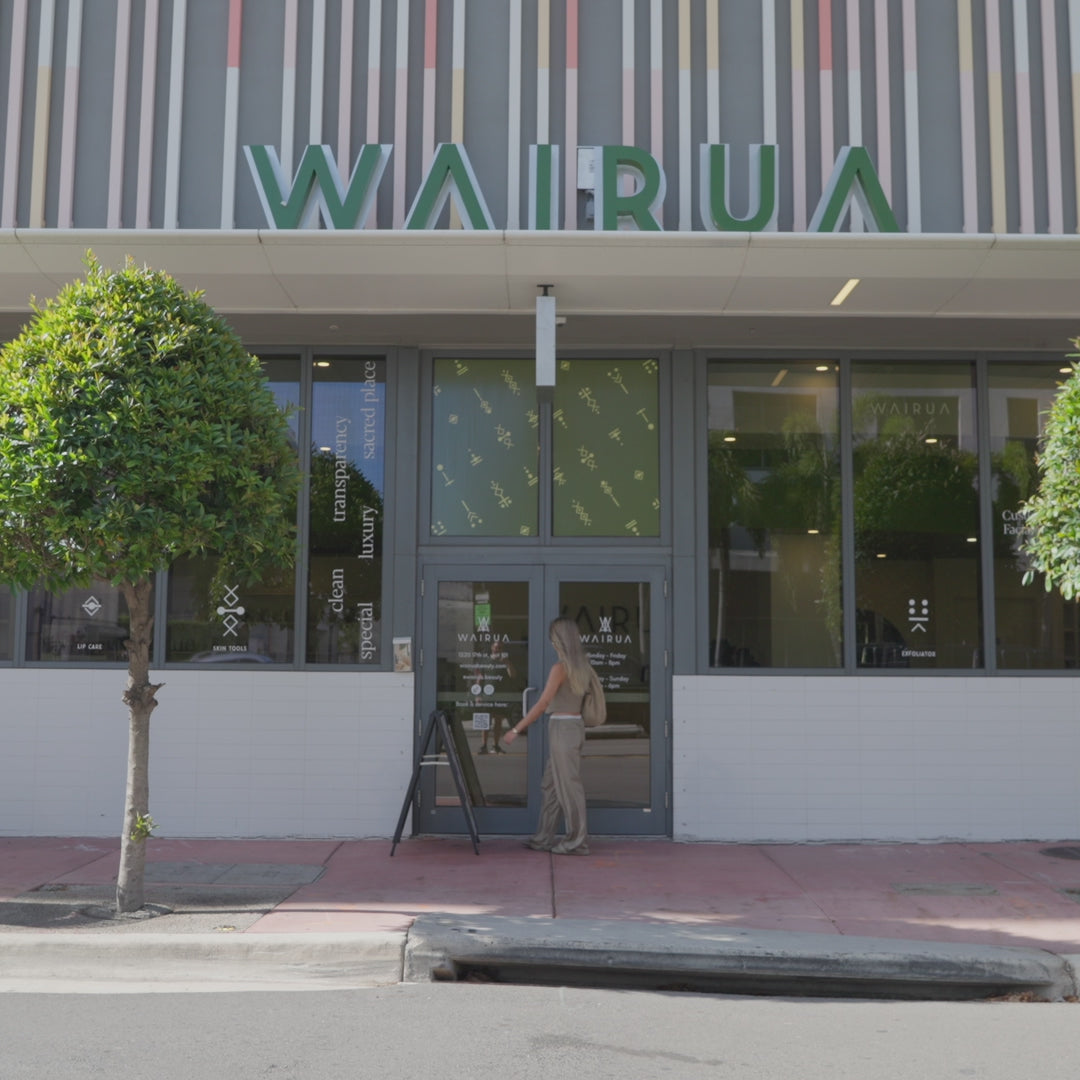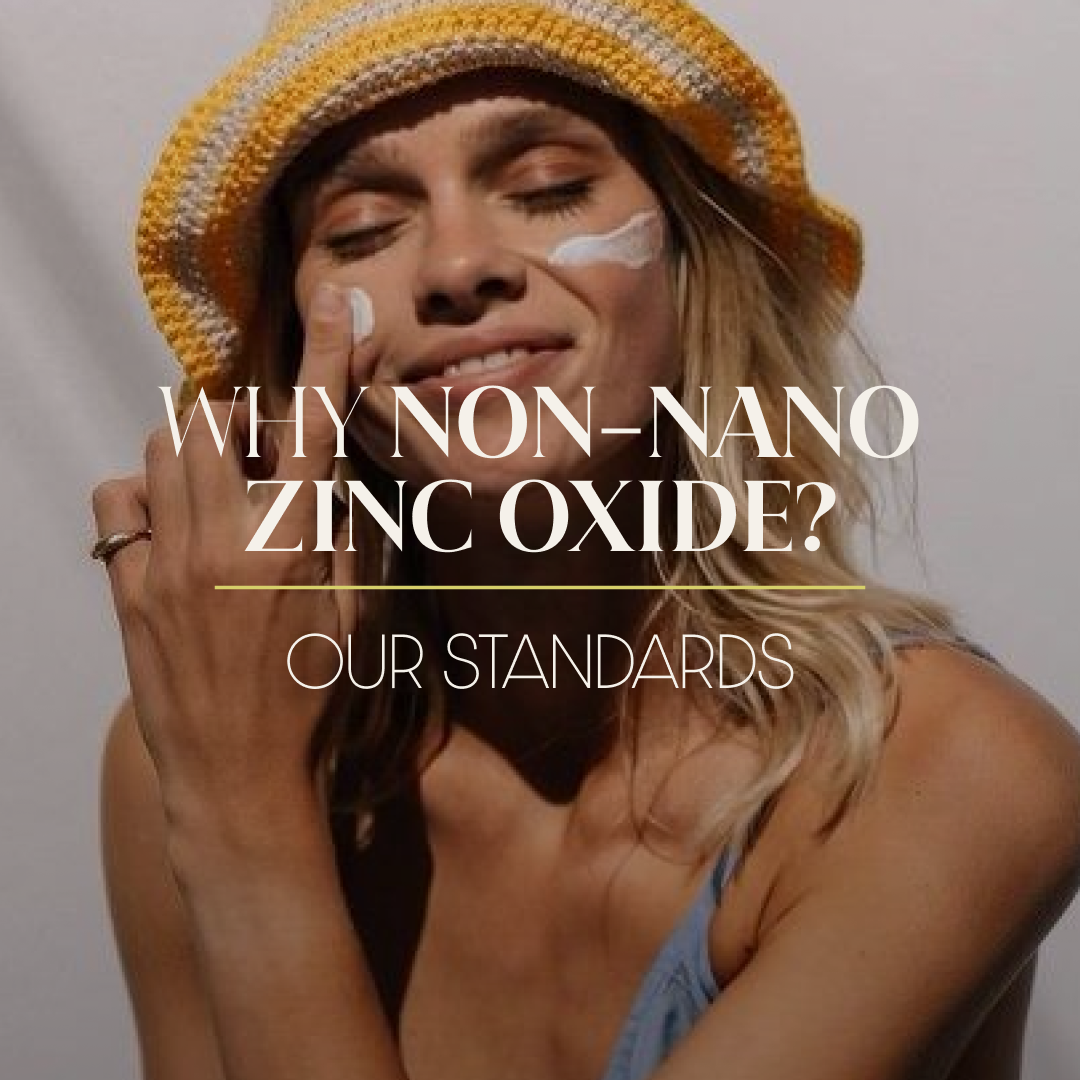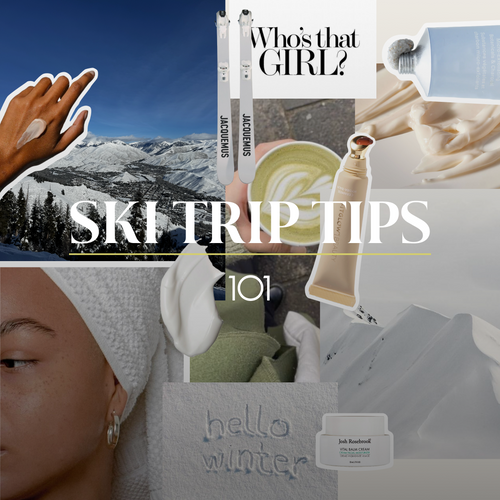Mother's Day Gift Guide

Welcome to Wairua
At Wairua, we believe that a holistic approach to beauty should include a curation of brands that use good quality ingredients, are safe for both the consumer and the planet, and prioritize sustainability.
Read our latest posts
Why We Only Carry Mineral Non-Nano Zinc Oxide Sunscreens
At Wairua, we’re always talking about how we only curate sunscreens with mineral, non-nano zinc oxide. But what does that actually mean? Let’s break it down. Mineral vs Chemical Sunscreens There are two main types of sunscreens: mineral and chemical. Mineral sunscreens use active ingredients like zinc oxide and titanium dioxide. These minerals sit on top of your skin and physically reflect UV rays away — like a mirror. They start protecting you immediately upon application. Chemical sunscreens, on the other hand, work differently. They absorb UV rays into the skin, transform the rays into heat, and then release that heat from the body. Common chemical sunscreen ingredients include: Oxybenzone - Octinoxate - Avobenzone - Octocrylene - Homosalate Sounds fine, right? Not exactly. The Problems with Chemical Sunscreens Chemical sunscreens come with some serious concerns: Oxybenzone, a common ingredient, is not carcinogenic on its own — but when exposed to sunlight (you know, the whole point of sunscreen?), it can form harmful free radicals. They can increase estrogenic activity in the body (hormone disruption). They generate free radicals, leading to cellular damage. They are linked to indirect DNA damage, which over time can contribute to cancer. A 2007 University of California study found a significant correlation between sunscreen use and increased rates of skin cancer. They can block the production of Vitamin D — crucial for your immune system, bone health, and mood regulation. Many chemical ingredients are currently under FDA review because there isn’t enough evidence to confirm they’re safe. The FDA has stated that only mineral UV filters — zinc oxide and titanium dioxide — are officially recognized as safe and effective. Why Some People Avoid Mineral Sunscreens If mineral sunscreens are so good, why doesn’t everyone use them?One word: white cast. Mineral sunscreens, especially traditional zinc oxide formulas, can leave a chalky, white layer on the skin — not ideal when you’re at the beach trying to look and feel your best. The Rise of Nano Zinc Oxide — and Why We Avoid It To solve the white cast problem, many brands turned to nano-sized zinc oxide.Nano particles are so tiny they can blend invisibly into the skin. But here’s the catch: nano particles can potentially penetrate the skin barrier and enter the bloodstream. Research has raised concerns about nano-sized particles causing oxidative stress inside the body — something you definitely don’t want from your sunscreen. Why We Choose Non-Nano Zinc Oxide At Wairua, we believe you shouldn’t have to compromise your health for your skin to look good.That’s why every sunscreen we curate uses non-nano zinc oxide — large enough to stay on your skin (where it belongs), but carefully formulated with advanced dispersion technologies to blend beautifully without leaving you looking like a ghost. Some of the brands we carry even use patented ingredients to create an ultra-sheer, luxurious finish that protects you in the most beautiful, skin-loving way possible.
Learn moreSkincare Tips for Your Ski Trip
When we hit the slopes, our skin faces the challenges of extreme cold, dry air, and intense sun exposure. These conditions can leave it dehydrated, sensitive, and in need of extra care. That’s why Azul, our founder, is sharing her top tips to keep your skin hydrated and protected during your skiing adventures. 1. Sun Protection is Non-Negotiable While skiing, the sun’s rays are even more intense due to the high altitude and reflective snow. Start your day by applying a mineral sunscreen. Reapply every two or three hours, especially if you’re out on the slopes all day. 2. Switch to a Richer Moisturizer Cold weather can severely dehydrate your skin. To combat this, swap your regular moisturizer for a richer, more nourishing one. If buying a new moisturizer isn’t an option, enhance your current one by mixing in a few drops of facial oil. This simple step will provide an extra boost of hydration and protect your skin from the harsh elements. 3. Don’t Neglect Lip Care Cracked lips are almost inevitable in extreme weather. Avoid lip balms with petroleum, mineral oil, or vaseline as they aren’t clean, eco-friendly, or truly hydrating. Instead, opt for a product like the Ceramide Lip Balm by Fitglow Beauty, which contains ceramides, peptides, and antioxidants. It’s been tested for effectiveness in extreme climates, making it the perfect choice to keep your lips healthy and moisturized. 4. Pause the Exfoliation Winter is often considered the ideal time to use retinol and exfoliants, but during a ski trip, it’s best to hit pause on these products. The extreme cold already stresses your skin, and exfoliating can increase sensitivity. Focus on nourishing and soothing your skin while on the slopes, and return to exfoliating once you’re back home.
Learn moreSkincare Spotlight: serums
Facial serums are essential for delivering high concentrations of active ingredients that target specific skin concerns. Think of a serum as the treatment stage in your skincare routine, designed to be applied after cleansing but before moisturizing. Serums are generally lightweight and packed with powerful ingredients that penetrate deeply to address concerns like acne, aging, hydration, and overall skin tone. Understanding Serum Types: Choosing the Right Formula Facial serums come in different textures and consistencies, from water-based to oil, gel, and lotion. The general rule for applying them is to apply the thinnest consistency first, which allows each product to be absorbed efficiently. When choosing a serum, keep your skin goals in mind. Targeted Serums for Every Skin Need Acne-Prone Skin: Look for serums containing salicylic acid and niacinamide to control oil, reduce inflammation, and refine pores. Anti-Aging: Peptides, vitamin C, and retinol (best used at night) can help stimulate collagen production, improve skin elasticity, and reduce fine lines. Texture Improvement: AHAs (like glycolic and lactic acid) are excellent for smoothing the skin by gently exfoliating and promoting cell turnover. Vitamin C Serums: One of the most popular serum choices, vitamin C is a potent antioxidant that brightens, protects against environmental damage, and boosts collagen production, making it suitable for almost any skin type. Why a Serum with Multiple Active Ingredients Might Be Best Using only 1 or 2 serums with multiple active ingredients can provide a balanced treatment without the risk of layering too many products, which may reduce the effectiveness of each layer. Combining actives in one formula can also ensure that your skin receives a balanced dose of nutrients, reducing the number of inactive ingredients. Tips for Serum Application Less is More: A few drops are usually enough to cover your face and neck. Morning vs. Night: Use antioxidant-rich serums (like vitamin C, Niacinamide) in the morning to protect against daily pollutants and anti-aging or exfoliating serums (like retinol, BHAs or AHAs) at night for best results. Consistency: Serums work best with regular use, so make them a consistent part of your routine. Remember, serums are applied before moisturizers and oils. Choosing the right serum can make a noticeable difference in your skin’s health, texture, and overall appearance. With the right combination of actives, serums are a straightforward yet impactful way to address specific skin needs and elevate your skincare routine. Consultation for Your Perfect Match Still unsure which serum is the best fit for your skincare routine? Don’t worry! Our skincare specialists are here to guide you. Take advantage of our free consultation service to discuss your unique skincare goals and concerns, and let our experts provide personalized recommendations tailored to your skin type and needs. Skincare doesn’t have to be complicated. With the right guidance and products, you can achieve a balanced, radiant, and healthy complexion.
Learn more



















































